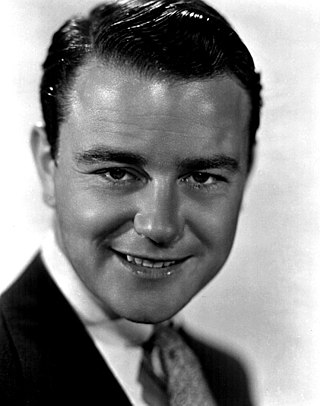
Lewis Frederick Ayres III was an American actor whose film and television career spanned 65 years. He is best known for starring as German soldier Paul Bäumer in the film All Quiet on the Western Front (1930) and for playing Dr. Kildare in nine films. He was nominated for an Academy Award for Best Actor for his performance in Johnny Belinda (1948).

Maureen O'Sullivan was an Irish actress who played Jane in the Tarzan series of films during the era of Johnny Weissmuller. She starred in dozens of feature films across a span of more than half a century and performed with such actors as Laurence Olivier, Greta Garbo, Fredric March, William Powell, Myrna Loy, Marie Dressler, Wallace Beery, Lionel Barrymore, the Marx Bros. and Woody Allen. In 2020, she was listed at number eight on The Irish Times list of Ireland's greatest film actors.
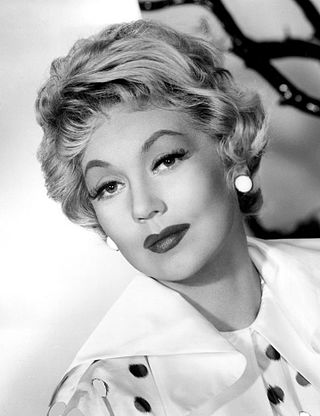
Ann Sothern was an American actress who worked on stage, radio, film, and television, in a career that spanned nearly six decades. Sothern began her career in the late 1920s in bit parts in films. In 1930, she made her Broadway stage debut and soon worked her way up to starring roles. In 1939, MGM cast her as Maisie Ravier, a brash yet lovable Brooklyn showgirl. The character proved to be popular and spawned a successful film series and a network radio series.

Young Dr. Kildare is a 1938 American drama film directed by Harold S. Bucquet and starring Lew Ayres as Dr. James Kildare, an idealistic, freshly graduated medical intern, who benefits greatly from the wise counsel of his experienced mentor, Dr. Leonard Gillespie. The film was based on a story and characters created by author Frederick Schiller Faust, writing as Max Brand.
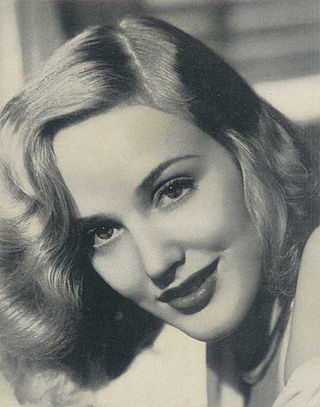
Georgia Carroll was an American singer, fashion model, and actress, best known for her work with Kay Kyser's big band orchestra in the mid-1940s. She and Kyser were married in 1944 until he died in 1985.

Night World is a 1932 American pre-Code drama film featuring Lew Ayres, Mae Clarke, and Boris Karloff. The supporting cast includes George Raft and Hedda Hopper.
Nell Columbia Boyer Martin (1890–1961), usually known as Nell Martin and also published under the name Columbia Boyer, was an American author from Illinois specializing in light-hearted mysteries and short stories.
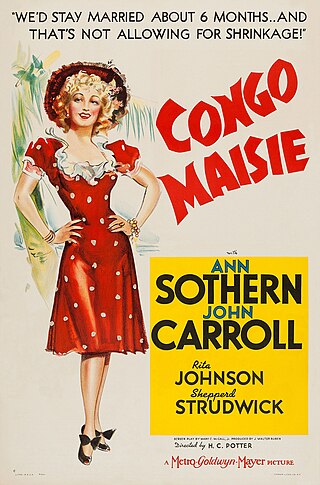
Maisie Ravier is a fictional character, best known as the leading character of ten American films (1939–1947), the Maisie films, and the radio show The Adventures of Maisie. In these, she was played by actress Ann Sothern.
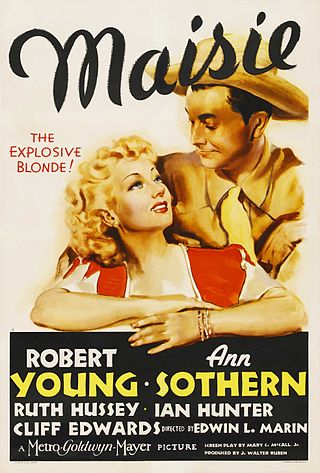
Maisie is a 1939 American comedy film directed by Edwin L. Marin based on the 1935 novel Dark Dame by Wilson Collison. The rights to the novel were originally purchased by MGM for a Jean Harlow film, but Harlow died in 1937 before a shooting script could be completed. The project was put on hold until 1939, when Ann Sothern was hired to star in the film with Robert Young as leading man.
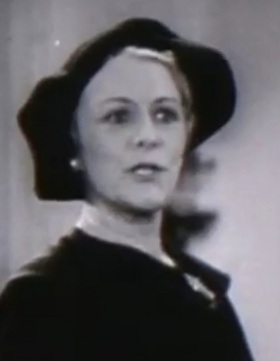
Nella Walker was an American actress and vaudeville performer of the 1920s through the 1950s.
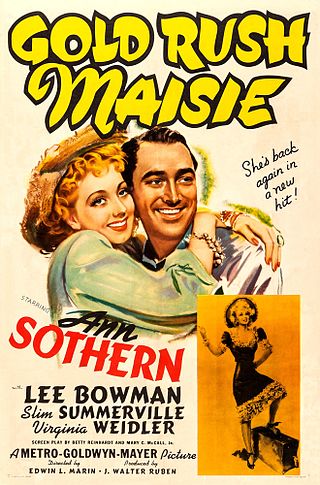
Gold Rush Maisie is a 1940 drama film, the third of ten films starring Ann Sothern as Maisie Ravier, a showgirl with a heart of gold. In this entry in the series, she joins a gold rush to a ghost town. The film was directed by Edwin L. Marin.

Congo Maisie is a 1940 comedy-drama film directed by H. C. Potter and starring Ann Sothern for the second time in the ten film Maisie series as showgirl Maisie Ravier.
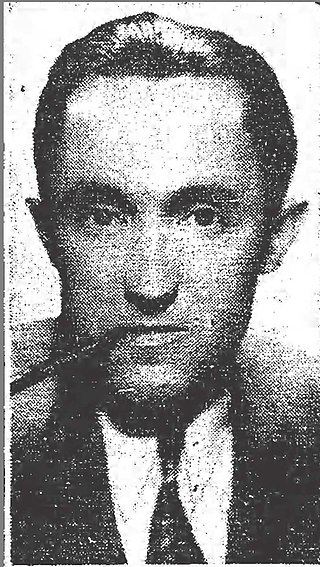
Wilson Collison was a writer and playwright.

Maisie Gets Her Man is a 1942 American romance film directed by Roy Del Ruth and starring Ann Sothern and Red Skelton. It is the sixth of the ten-film Maisie series.
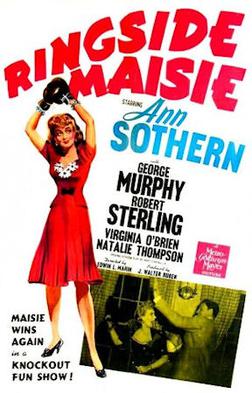
Ringside Maisie is a 1941 American sports comedy film directed by Edwin L. Marin and starring Ann Sothern, Robert Sterling and George Murphy. It is the fifth of ten pictures in the Maisie series. This was Sothern and future husband Sterling's only film together.
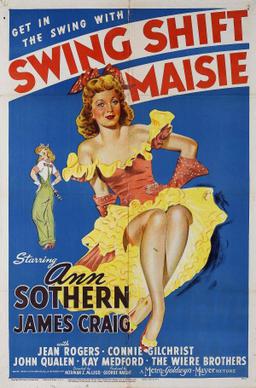
Swing Shift Maisie is a 1943 romantic comedy film directed by Norman Z. McLeod. It is the seventh in a series of 10 films starring Ann Sothern as Maisie, preceded by Maisie Gets Her Man (1942) and followed by Maisie Goes to Reno (1944). Her co-stars are James Craig and Jean Rogers.
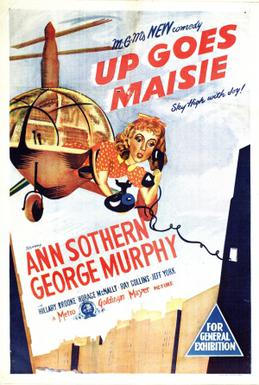
Up Goes Maisie is a 1946 American comedy film directed by Harry Beaumont. Produced by Metro-Goldwyn-Mayer, it is the ninth of 10 films starring Ann Sothern as ex-showgirl Maisie Ravier, characterized as "that double trouble doll with the sassy chassis." At nearly 40 years old, it was clear that both Sothern and the series was "winding down". In this series entry, Maisie, "the peppery lady with a golden heart" goes to work for an inventor and helicopter operator played by George Murphy.

Maisie Goes to Reno is a 1944 American comedy film directed by Harry Beaumont. It is the eighth film starring Ann Sothern as Maisie Ravier, preceded by Swing Shift Maisie and followed by Up Goes Maisie. John Hodiak plays her love interest in this 1944 romantic comedy.

Undercover Maisie is a 1947 American comedy film directed by Harry Beaumont and starring Ann Sothern, Barry Nelson, and Mark Daniels. It was produced by Metro-Goldwyn-Mayer, the final film of the ten film Maisie series starring Ann Sothern as ex-showgirl Maisie Ravier. In this series entry, Maisie Ravier decides to join the Los Angeles police force. The previous film was Up Goes Maisie.

Spring Madness is a 1938 American romantic comedy film based on the play of the same title by Philip Barry. It was directed by S. Sylvan Simon for Metro-Goldwyn-Mayer, and stars Maureen O'Sullivan, Lew Ayres, Ruth Hussey and Burgess Meredith.



















